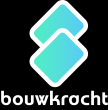
Candibell
The E-commerce industry has been focusing a lot of attention on making purchases and transactions faster, easier, and more accessible as can be seen from recent advancements in technology and business innovation in this area. Voice-commerce, Mobile-commerce, and a countless number of loyalty programs and subscription programs are becoming ubiquitous. Customers love new technologies and enjoy the perks and convenience. Merchants, on the other hand, benefit when the innovations boost sales and increase customer loyalty, making their brand more visible.
Despite these benefits, in all of these models, the customer still bears the cognitive burden of purchasing and reordering. No matter how you are buying, on a laptop browser, on your mobile phone via a merchant app, or via a smart speaker, one needs to first realize that certain products are depleting, and then make the decision to reorder. All these existing technologies make the purchase experience better and faster, but they cannot intelligently make the decision in your place to reorder at the most appropriate time. Therefore, you still have to remember to reorder something that you’re about to use up.
An increased number of subscription-based programs have been developed by merchants to address this problem. These programs restock customers at a defined time interval. Customers can "adjust“ their delivery schedule based on the products' actual consumption level. While this is certainly a significant first step towards a more intelligent and autonomous mode of shopping, it still suffers from a) mediocre accuracy due to a lack of the individual's actual consumption information, and b) as a result, the programs is invariant to changes, and tend to deliver too late (supply gap) or too early (overstock). Unfortunately, a time-based subscription program that frequently requires customers to adjust their delivery schedules is no longer a subscription program. This inevitably calls for a more robust and effective program that is based on actual consumption.
Realizing these limitations and inspired by the working principle of the sport watch, we decided to launch Candibell. Candibell is an IoT-based service platform for commerce automation. We’ve set our vision beyond making transactions and purchases easy and more accessible – we want to automate reordering based on demand, not based on a pre-defined time schedule. We believe this is the future of E-commerce:
An autonomous experience that delivers at the perfect time, every time.
We conceptualized, designed, and prototyped, and we came up with a number of criteria for the right product that is likely to excel in the market. First, the sensor must be small. Solutions with a large footprint cannot be easily handled by the customer and is hard to adapt to different scenarios. Second, the solution must be very low cost, yet still provide superb sensing and feedback capability. Third, the solution must be generic and compatible with different types of products as opposed to only one or two types. Finally, the product needs to be reliable and durable, and easy to use.
We arrived at a design which we believe satisfies these criteria. In this form factor, the Candibell sensor can be attached to bottles and packages of different sizes. The sensor is small and re-usable. It can be linked to different products and the Candibell server will use the correct model for this product to make a prediction, based on the specific customer's usage pattern. Candibell Sensors communicate with Candibell Hub via Bluetooth 5; this allows us to build the sensor into a smaller form factor, and allow the sensor to work up to 2 years without replacing its battery.

































